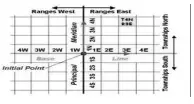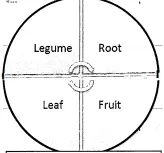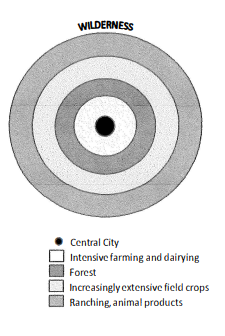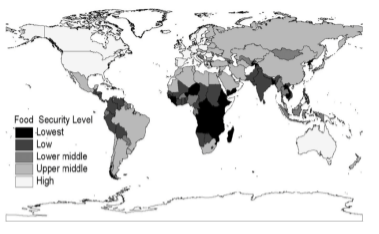Unit 5
5.0(1)
Card Sorting
1/63
Study Analytics
Name | Mastery | Learn | Test | Matching | Spaced |
|---|
No study sessions yet.
64 Terms
1
New cards
Shifting Cultivation (slash & burn)
**Agricultural system used to clear land to make fields for crops using a cycle of land rotation & fallow periods.**
* Fallow period:
* Leaving a field for 5-10+ years for it to gain fertility.
* Fallow period:
* Leaving a field for 5-10+ years for it to gain fertility.
2
New cards
Nomadic Pastoralism
**An agricultural system where the caring & breeding of animals is based on open grazing**
* Transhumance - Moving herds on a seasonal basis to new land/water sources
* Transhumance - Moving herds on a seasonal basis to new land/water sources
3
New cards
Mediterranean
**Focused on cultivating livestock, grain, & a tree or vine crop**
* Agroforestry - integration of trees with crops and/or livestock
* Agroforestry - integration of trees with crops and/or livestock
4
New cards
Intensive Agriculture
Type of agriculture that requires large levels of manual labor or machinery to produce the maximum crop yield; yields a large amount of output per acre through concentrated farming; uses a small amount of land relative to amount of output
5
New cards
Market Gardening
* Small scale production of fruits, vegetables, and flowers as cash crops sold directly to local consumers
* Located in/near market
* Heavy fertilizing is required for successive crops
* Located in/near market
* Heavy fertilizing is required for successive crops
6
New cards
Mixed Crop/Livestock Systems
* Integrated system based on raising crops to feed livestock and selling the animal products off the farm
* Practiced across Asia
* Practiced across Asia
7
New cards
Plantation Agriculture
* Large plot of land that specializes the production of a cash crop
* Company HQs tend to be in North America/ Europe, while plantations are located in LDCs
* Company HQs tend to be in North America/ Europe, while plantations are located in LDCs
8
New cards
Extensive agriculture
Small inputs of labor, fertilizers, and/or capital; takes up a large amount of land relative to the output
9
New cards
Settlement Patterns and Survey Methods
Settlement patterns are influenced by land prices, transportation infrastructure, public policy, and social and ecological processes.
10
New cards

Clustered Settlements
* Families live close to one another
* Fields surround houses and barns or farm buildings
* Often known as hamlets or villages
* Fields surround houses and barns or farm buildings
* Often known as hamlets or villages
11
New cards

Linear Settlements
* Line of buildings concentrated on a road or river
* Facilitates communication
* Property is in long, narrow strips
* Facilitates communication
* Property is in long, narrow strips
12
New cards

Dispersed Settlements
* Farmers live on individual farms
* More isolated from neighbors
* More difficult for communication within community
* More isolated from neighbors
* More difficult for communication within community
13
New cards

Metes and Bounds
* Relies on description of land ownership by natural features
* Based on trees, streams, etc.
* Easily contested between land owners due to changing natural environment
* Based on trees, streams, etc.
* Easily contested between land owners due to changing natural environment
14
New cards

Township and Range
* Rectangular land division
* Range is the measurement east to west
* Township is measurement of distance north to south
* Western U.S. was divided this way
* Range is the measurement east to west
* Township is measurement of distance north to south
* Western U.S. was divided this way
15
New cards

Long Lots
* Divides land into narrow parcels
* Stretched from rivers, roads, canals, or any other shared significant location
* Stretched from rivers, roads, canals, or any other shared significant location
16
New cards
Before The First Agricultural Revolution
* Most of the earliest humans were nomadic hunter-gatherers living in small groups following animals and collecting fruits, vegetables, and nuts along the way,
* Some groups lived along coasts and got their food from fishing.
* Some groups lived along coasts and got their food from fishing.
17
New cards
During The First Agricultural Revolution (Neolithic Revolution)
* Starting In about 8500 BC in several different hearths, people began to settle in areas and domesticate plants and animals (farming).
* Once faming became more prominent, hunter-gatherer groups began to disappear.
* Once faming became more prominent, hunter-gatherer groups began to disappear.
18
New cards
The Columbian Exchange
* The exchange of plants, animals, and diseases between the Americas and the rest of the world.
* Trade between the "Old world" and the "New world" Example of cultural diffusion
* Happened after Christopher Columbus' voyage in 1492
* Trade between the "Old world" and the "New world" Example of cultural diffusion
* Happened after Christopher Columbus' voyage in 1492
19
New cards
Effects of the Columbian Exchange
* Increased food supply for both the New World and Old World
* New crops, products and animals introduced to both worlds
* Changed the way people lived
* Europeans brought technology to the Americas (ex-new farming methods and the alphabet)
* Increase in population
* Everything became more interconnected
* New crops, products and animals introduced to both worlds
* Changed the way people lived
* Europeans brought technology to the Americas (ex-new farming methods and the alphabet)
* Increase in population
* Everything became more interconnected
20
New cards
Cons of the Columbian Exchange
* Many diseases such as smallpox, influenza, and malaria were brought to the Americas, who had no immunity to it
* Slavery and exploitation of workers
* Slavery and exploitation of workers
21
New cards
Second Agricultural Revolution (occurred during the Middle Ages)
* The development of new tech and agricultural practices in Western Europe.
* These new advancements meant more efficient farming and larger yields.
* Effected mostly Europe and North America {no LDCs).
* This was the first-time mechanization was introduced to agriculture.
* Very closely related to the Industrial Revolution,
* These new advancements meant more efficient farming and larger yields.
* Effected mostly Europe and North America {no LDCs).
* This was the first-time mechanization was introduced to agriculture.
* Very closely related to the Industrial Revolution,
22
New cards
The Role of the Industrial Revolution
* Started in England {lead to more urbanized cities there).
* Development of new machines and high speed/effective production.
* Lead to rural---urban migration in search of factory/manufacturing jobs. (today many immigrants move to big, successful cities for jobs)
* It effected the textile and agricultural industries drastically.
* Development of new machines and high speed/effective production.
* Lead to rural---urban migration in search of factory/manufacturing jobs. (today many immigrants move to big, successful cities for jobs)
* It effected the textile and agricultural industries drastically.
23
New cards
\[Industrial Revolution\] New Agricultural Inventions
1\. Cotton Gin: separates cotton fibers from seeds.
2\. Moldboard Plow: curved metal plate that allows farmers to turn over soil.
3\. Seed Drill: places seeds quickly into small holes along the field.
4\. Horse Collar: enabled farmers to use horses for labor, which was much more efficient.
2\. Moldboard Plow: curved metal plate that allows farmers to turn over soil.
3\. Seed Drill: places seeds quickly into small holes along the field.
4\. Horse Collar: enabled farmers to use horses for labor, which was much more efficient.
24
New cards

4 Course Crop Rotation (4-year process)
* Farmers rotate the types of crops they plant every year to ensure the soil's fertility.
* This avoids a fallow period & increases yields & productivity.
* This avoids a fallow period & increases yields & productivity.
25
New cards
Green Revolution
High-yield seeds, chemicals, mechanization, positive and negative consequences
26
New cards
When and where did The Green Revolution take place?
* Main purpose: to alleviate world hunger, specifically in LDCs
* Lead to a dramatic increase in grain production. between 1965 and 1985. in Asia and Latin America
* Did NOT affect Sub-Saharan Africa
* Lead to a dramatic increase in grain production. between 1965 and 1985. in Asia and Latin America
* Did NOT affect Sub-Saharan Africa
27
New cards
How were chemicals, mechanization, and high-yield seeds used?
* Chemicals: Chemicals (ex.fertilizer) were used to enhance plant growth
* Mechanization: Machines and tools were made to make the process of planting and harvesting easier and quicker
* High-yield seeds: High-yield seeds largely increased the amount of crops produced.
* Ex: High-yielding seed varieties were exported to India and Pakistan in the 1960s; in less than a decade, wheat production nearly doubled in both countries
* Mechanization: Machines and tools were made to make the process of planting and harvesting easier and quicker
* High-yield seeds: High-yield seeds largely increased the amount of crops produced.
* Ex: High-yielding seed varieties were exported to India and Pakistan in the 1960s; in less than a decade, wheat production nearly doubled in both countries
28
New cards
**Subsistence Agriculture** (Found in)
* LDCs, tropical rainforests: Central/South America, Africa, SE Asia→ (Shifting cultivation)
* Dry and desert areas in LDCs: India, North of Fertile Crescent, Northern Europe/Asia → (Pastoralism/Nomadic Herding)
* Asia: Thailand, Vietnam, India & coastal lowlands/river valleys → (Wet rice farming)
* Much of developing world (India, China, parts of Mexico and South America, Sub Saharan Africa) → (Smallholder crop and livestock farming)
* Dry and desert areas in LDCs: India, North of Fertile Crescent, Northern Europe/Asia → (Pastoralism/Nomadic Herding)
* Asia: Thailand, Vietnam, India & coastal lowlands/river valleys → (Wet rice farming)
* Much of developing world (India, China, parts of Mexico and South America, Sub Saharan Africa) → (Smallholder crop and livestock farming)
29
New cards
Commercial Agriculture (Found in)
* Great Lakes areas, NE of America, Northern Europe → (Commercial dairy farming)
* Southeast of US, Maine, Idaho, Caucasus → (Commercial gardening and specialized crops)
* Northern US, Southern Canada, Europe, Southern Australia → (Commercial grain)
* dry and desert areas: Western North America, Southern South America, Western Europe, Southern Africa, Australia → (Livestock ranching)
* places with Mediterranean climate: North Africa, South Europe, California → (Mediterranean)
* Europe, Russia, Corn Belt of US→ (Mixed crop and livestock farming)
* LDCs in tropical areas: Central and South America, SE Asia, Southern Africa → (Plantation)
* Southeast of US, Maine, Idaho, Caucasus → (Commercial gardening and specialized crops)
* Northern US, Southern Canada, Europe, Southern Australia → (Commercial grain)
* dry and desert areas: Western North America, Southern South America, Western Europe, Southern Africa, Australia → (Livestock ranching)
* places with Mediterranean climate: North Africa, South Europe, California → (Mediterranean)
* Europe, Russia, Corn Belt of US→ (Mixed crop and livestock farming)
* LDCs in tropical areas: Central and South America, SE Asia, Southern Africa → (Plantation)
30
New cards
Bid-Rent Theory
* As you move close to the market → land becomes more expensive,
* Farther away from market → land is less expensive.
* Farther away from market → land is less expensive.
31
New cards
Intensive agriculture
Intensive farmers can pay for the expensive land closer to market bc less land is used→ intensive agriculture is located closer to the market
32
New cards
Extensive agriculture
Extensive farmers can pay for the cheaper land farther from market bs more land is used→ extensive agriculture is located farther from market
33
New cards
Horizontal Integration
Many branches of a company OR many commonly owned companies work together and sell their products
34
New cards
Vertical Integration
One firm controls multiple phases of a commodity chain
35
New cards
Commodity Chain
Linked system of processes; gathers resources, converts into goods, packages, distributes, and sells
* Ex. clothing industry
* Ex. clothing industry
36
New cards
Decline of Small Family Farms
* Businesses shift from horizontal to vertical integration⤵
* Complex commodity chains form⤵
* Companies gain large control over the market⤵
* Traditional family farms can't compete and close, sending farmers into unemployment
* In the last 10 or so years though movements have started in order to support local farmers, such as the grassroots movement.
* Complex commodity chains form⤵
* Companies gain large control over the market⤵
* Traditional family farms can't compete and close, sending farmers into unemployment
* In the last 10 or so years though movements have started in order to support local farmers, such as the grassroots movement.
37
New cards
Technology’s effect on agriculture
* Technology has increased the carrying capacity of the land, making it so that farmers can grow more on less land.
* Increased the economies of scale - the larger your farm, the more efficient your work will be more profitable + more technology
* Increased the economies of scale - the larger your farm, the more efficient your work will be more profitable + more technology
38
New cards

Von Thunen
Model made in 1826 by J.H. Von Thunen to explain patterns of agricultural processes
* Assumptions in model
* Market is in the center of an isolated state
* Land is flat • Farmers transport goods to market in wagon
* Farmers act to maximize profit
* Assumptions in model
* Market is in the center of an isolated state
* Land is flat • Farmers transport goods to market in wagon
* Farmers act to maximize profit
39
New cards
First Ring - Intensive Farming and Dairying \[\]
* Close to city because more perishable, would not spoil before city
* Needed less space for goods like fruits, vegetable-
* Needed less space for goods like fruits, vegetable-
40
New cards
Second Ring - Forest \[\]
* Timber heavy and expensive to transport over distances
* No longer exists in modern world
* No longer exists in modern world
41
New cards
Third Ring - Extensive Crops \[\]
* Lighter and lasted longer for farther away travel
* Needed more room for lots of crop
* Needed more room for lots of crop
42
New cards
Fourth Ring - Ranching \[\]
* Animals self transport to city, so very cheap
* More land required for animals
* More land required for animals
43
New cards
Fifth Ring- Wilderness
No agricultural practices because distance from city too large
44
New cards
Bid-Rent Theory
* As you move closer to the market, the land becomes more expensive, and farther away from the market is less expensive
* Buy less land, for intensive farming (inner rings)
* Buy more land, for extensive farming (outer rings)
* Buy less land, for intensive farming (inner rings)
* Buy more land, for extensive farming (outer rings)
45
New cards
Global commodity chains (Commodity chains on a global scale)

46
New cards
Commodity dependent
Countries are commodity dependent when commodities make up 60% or more of their exports. Sub-Saharan Africa is the most commodity dependent region.
47
New cards
Agribusiness
**The businesses that are involved in the production and marketing of a farm product**
* Ex: the businesses in a commodity chain
\
* Ex: the businesses in a commodity chain
\

48
New cards
GMOs (genetically modified organisms)
**Organisms that have had their DNA altered through genetic engineering**
* Mainly used to create higher yields and build resistance to pesticides and fertilizers
* Mainly used to create higher yields and build resistance to pesticides and fertilizers
49
New cards
Monoculture
The growth of a single crop in a field
50
New cards
Consequences of Agricultural Practices
* Biodiversity: **a variety of plants and animals**
* **Field with covered with one crop= low biodiversity.**
* **Over use of land by**
* Shortening fallow periods
* Use of pesticides/ fertilizers in soil
* Overuse of irrigation (drains ground water)
* Salinization: **Accumulation of salt in the soil**
* **Desertification**: The shift of usable land to desert like conditions because of humans and/or environment
* **Field with covered with one crop= low biodiversity.**
* **Over use of land by**
* Shortening fallow periods
* Use of pesticides/ fertilizers in soil
* Overuse of irrigation (drains ground water)
* Salinization: **Accumulation of salt in the soil**
* **Desertification**: The shift of usable land to desert like conditions because of humans and/or environment
51
New cards
Clearing Land for Farming Causes
* Land coverage change (use of land and what is covering it changes)
* Deforestation: the clearing of large areas of trees
* Deforestation: the clearing of large areas of trees
52
New cards
Contemporary Agriculture
The modern advancements in agriculture used today. (ex.GMOs, pesticides, fertilizers )
53
New cards
Green Revolution
Period from 1980 to present day where the use of biotechnology was introduced to agriculture in order to increase crop yields.
54
New cards
GMOs
**Organisms genetically altered to be more appealing to producers and consumers.**
* Long term effects aren't known
* Some modifications can cause allergic reactions in consumers.
* Leads to monoculture, as the crops can last through harsher conditions.
* Long term effects aren't known
* Some modifications can cause allergic reactions in consumers.
* Leads to monoculture, as the crops can last through harsher conditions.
55
New cards
Biotech
**Improve the quality of the yield of crops and livestock via cross breeding, hybridization, and recently genetic engineering.** (Ex: Pest Resistant plants)
56
New cards
Aquaculture
* The farming of aquatic animals or cultivation of aquatic plants for food
* Aquaculture can contaminate water bc waste products stay in the water longer
* Some fish food is contaminated with pesticides and chemicals that are in the feed, also the use of antibiotics and artificial supplements that are given to the fish causes some to say it is unhealthy
* Aquaculture can contaminate water bc waste products stay in the water longer
* Some fish food is contaminated with pesticides and chemicals that are in the feed, also the use of antibiotics and artificial supplements that are given to the fish causes some to say it is unhealthy
57
New cards

How do we feed a global population (that is growing)
* Lack of food access is still an issue
* Food Insecurity
* Food Deserts
* Enough food is produced but DISTRIBUTION is an issue
* Weather can lead to adverse conditions for producing crops and cause food insecurity in a given year
* Arable land that could use and often was used for farming is lost to urban sprawl (suburbanization)
* Food Insecurity
* Food Deserts
* Enough food is produced but DISTRIBUTION is an issue
* Weather can lead to adverse conditions for producing crops and cause food insecurity in a given year
* Arable land that could use and often was used for farming is lost to urban sprawl (suburbanization)
58
New cards

Sustainable Agricultre
Farming practices that ca1·efully manage natural resources and protect environmental conditions to help future generations, while maintaining farm profits.
59
New cards
World Trade Organization
Seeks to make trade freer through removal of tariffs and more, that distort the market.
* Domestic subsides= market distortions and prevent free trade in ag1·icultural goods
* Domestic subsides= market distortions and prevent free trade in ag1·icultural goods
60
New cards
Organic agriculture
**A farming system that promotes sustainable and biodiverse ecosystems by using natural processes rather than synthetic inputs.**
* Fastest growing sector of agriculture today
* Australia, Argentina, and BTazil have la1·gest arnas under organic management, however, lai·gest percent (25 % ) of organic land is found in Europe
* Products do not contain any GMOs (the USDA determines if a product can have the organic sticker on the packaging)
* Fastest growing sector of agriculture today
* Australia, Argentina, and BTazil have la1·gest arnas under organic management, however, lai·gest percent (25 % ) of organic land is found in Europe
* Products do not contain any GMOs (the USDA determines if a product can have the organic sticker on the packaging)
61
New cards
Eat local movements
**Encouragement of utilization of local products, distribution, and production, which replaces national/international food systems (Ex. Local Farmers Market)**
* Pros
* Less transportation costs
* Local economy boost
* F1·esher foods
* Cons
* Morn expensive local produce
* Local pollution due to livestock methane and/ or methane
* Pros
* Less transportation costs
* Local economy boost
* F1·esher foods
* Cons
* Morn expensive local produce
* Local pollution due to livestock methane and/ or methane
62
New cards
Community Supported Agriculture (CSA)
A network of individuals, who support one or more local farms, with growers and consumes sharing the risks and benefits of food production
* Pros
* Save money
* Support local farms
* Fresh foods
* Cons
* Transportation barriers
* Increased food preparation labor
* Not all CSAs are profitable
* Pros
* Save money
* Support local farms
* Fresh foods
* Cons
* Transportation barriers
* Increased food preparation labor
* Not all CSAs are profitable
63
New cards
Urban Agriculture
A practice to help improve food security at the household level using vacant lots, rooftops, balconies, or other spaces to grow food
64
New cards
Women in agriculture
Women are approximately 43% of the agricultural workforce overall